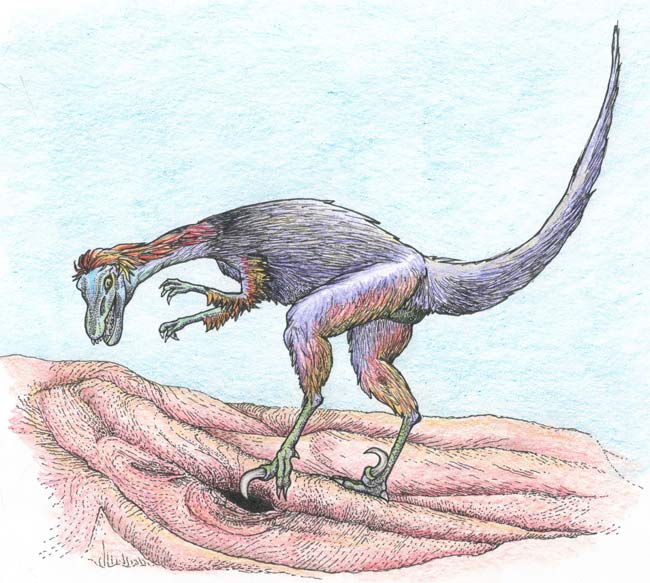Clawed Dinosaur Caught in the Act of Digging for Prey

A clawed, predatory dinosaur may have been caught in the act of digging for mammalian prey, scientists now reveal.
The fossils showing the paleo-scene were discovered within sandstone layers in southern Utah, and date back 75 million to 80 million years ago, when the area consisted of windblown dunes.
"We found them about four years ago in July, in 100 degree F (37 degree C) heat," said researcher Edward Simpson, a geologist at Kutztown University in Pennsylvania. "We had scorpions, rattlesnakes, and swarms of gnats."
One set of fossils consists of claw marks from a predatory theropod dinosaur that stood roughly 3 feet (1 meter) tall (at the hips) and 6 feet (2 meters) long — possibly a raptor relative of Deinonychus or Velociraptor. The way these marks are oriented suggest they were made by the creature digging to reach down for something.
Two fossilized burrows were spotted nearby. When compared with other burrows researchers have uncovered over the years, the size and complexity of these newfound ones suggest they belonged to mammals — the smaller burrow to a mouse-sized creature, the larger one to a guinea-pig-sized animal.
The fact these fossils are so close together suggests they are evidence of dinosaurs scrabbling down to prey on mammals, the researchers suggested. Although these fossils could have been made thousands of years apart, if one considers how these dinosaurs lived in the same area as burrowing mammals, "one can then ask why the dinosaurs might have been digging," Simpson said. "If you eliminate other prospects — these aren't footprints, and they're not in symmetrical patterns as we've seen when raking aside earth for a nest — you're left with predatory actions."
"It's often hard to capture the behaviors of dinosaurs in the fossil record to see what they were doing," Simpson told LiveScience. "This is one of the few examples where one might see the impact of their behaviors, which is really cool."
Get the world’s most fascinating discoveries delivered straight to your inbox.
The scientists detailed their findings in the August issue of the journal Geology.
- 25 Amazing Ancient Beasts
- Avian Ancestors: Dinosaurs That Learned to Fly
- Images: Dinosaur Drawings



